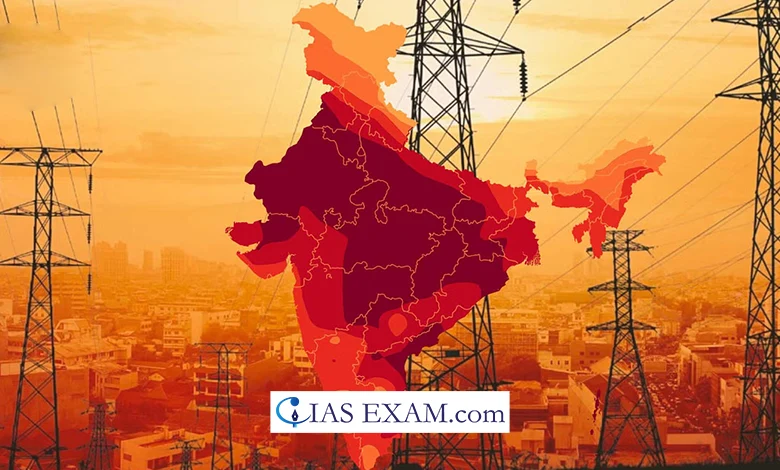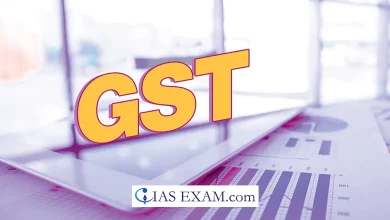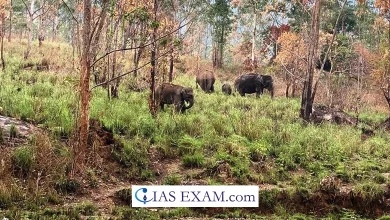Daily Current Affairs for UPSC
Impact of Heat on India’s Renewable Transition
Syllabus: Ecology & Environment [GS Paper - 3]

Context
- In a recent notification by IMD that, due to the onset of immense heat waves across the country, and thereby increasing energy demand is a major factor which contributes to this impact of heat on India’s renewable transition and it is very much inevitable.
Impact of heat due to increasing temperature
- The IMD(India meteorological department) predicts super above temperature normal levels for April-June in 2024.
- Unlike the South East, where predictions indicate 55%-65% probability in one half and more than 65% in the other half of the district.
- Certain areas might experience normal temperatures in proven times.
- Temperature increase is a negative phenomenon which causes reduction of crop yields, impact on the agriculture sector and withdrawal of water resources.
- Residential and industrial together influence commercial sectors to increase their power demand very much, especially in industrial centres.
- Workers who are exposed to heat outdoors can, for example, develop heat-related illnesses which may include but are not limited to rashes.
- The overwhelment of health service facilities is likely to result in further adversely affecting the young people, children and the elderly.
- Clean water, room ventilation and washroom facilities become particularly important during heat waves in the cities.
- Availability of capacity is the main factor; the data at the peak of March 2024 showed the highest peak-hour demand, at 190 GW.
- The prevalence of heat impacts calls for innovative approaches in agriculture, land use planning and the management of energy sources.
Energy Demand and India’s renewable Energy Transition
- Government targets: Targets to have 500 GW renewable power, renewable energy to reach 50% non-fossil fuel by 2030.
- Heat increases demand: Requires more energy mission, causes medical problems, makes air and water freshness issues appear.
- Solar focus: A solar energy supply of higher capacity; whereas coal is still the main source for peak demand.
- Coal dominance: Fossil fuel, coal, occupies almost 3/4 of overall electricity generation and remains the same since the harsh year of FY16.
- Energy storage: Those who could be economically sustainable include battery-based and Pumped Hydro Storage (PHS).
- Renewable generation: Whether renewables, including solar, hydro, wind, are regulated at 20-25% share of the electrical generation since FY16 stays the same.
- India is looking at coal as its energy pillar for the next 15 to 20 years, therefore, all the required measures must be initiated for this period.
- Concept of “net zero by 2070” appears feasible should the contribution of nuclear and renewable energy segments for emission reduction is substantial.
- We have to shift from fossil fuel based electricity early on to reduce our carbon dependency and to have the net-zero transition.
Conclusion and Way Forward
- Henceforth, India aspires to deal with the emission gap with the promised actions of major forest cover expansion and intensified absorption activities.
- Carbon neutrality is a compounded result of different types of solutions, because there is no answer which suits quite all.
- This transition will require planning which will involve implementing a variety of techniques and tools that are meant to integrate different technologies into the nation’s energy sector.
- Through an integral solution India might become one of the countries whose zero emissions are the only criteria of their energy factories.
Source: pressreader.com
UPSC Mains Practice Question
Q.”Discuss the challenges posed by increasing heatwaves in India on the country’s renewable energy transition. How can India overcome these challenges to achieve its renewable energy targets while addressing the impacts of rising temperatures?”[150 Words]





.png)



